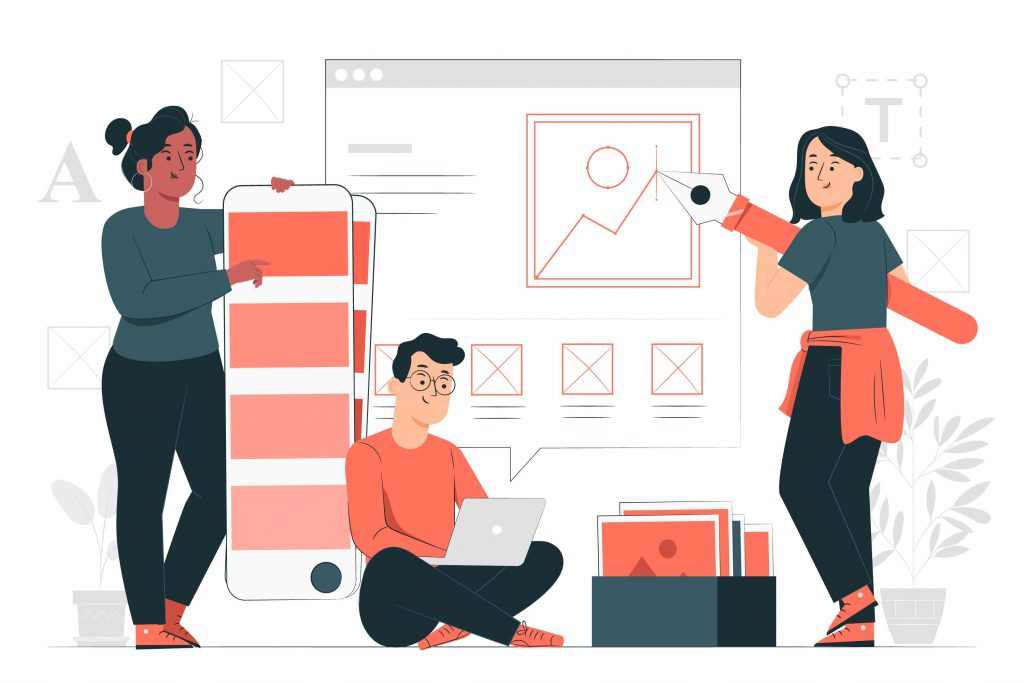KNOW-HOW ABOUT UI/ UX DESIGN

You probably might have overheard someone talk about the mind-blowing “UX” of a product or poor “UI” of a website. You must have definitely wondered what those terms mean. Are they tech jargons that only few knows about ?
Worry not because you’ve visited the right place to gain knowledge. If you’re keen to know more about UX/UI design, keep reading! By the end of this article, all your doubts will probably go away for good.
1. What do the terms UX and UI mean?
What is User Experience (UX) Design?
Many people club these two terms together, but they are quite different specializations. UX stands for User Experience Design. While UI stands for User Interface Design. UX is closely related to product design. You have used an ATM machine, didn’t you? ATM machine is an example of User Experience Design.
Suppose, you bought a brand new phone. You will feel proud and excited to own a new device, isn’t it? After few days, the phone slips from your hand and the screen breaks. How will you feel then? Heartbroken, perhaps. Similarly, at every stage there is some emotion attached to how and when you use the product. All of these emotions are observed by UX designer when you post a feedback of the product.
What is User Interface (UI) Design ?
If you look at any website or mobile applications, there will be small and colorful buttons. These buttons that enable us to experience that website or applications are designed by a User Interface Designer.
Think of your favorite app. Whatever app is your favorite; I can guarantee you that every good UI design has 3 things in common. They are Creativity Consistency and Clarity. Creativity to build unique graphic designs. Consistency in the design layout enhances the overall User Experience. And the third one is clarity in design layout. At maximum, there should be one or two ways of doing a thing to reduce the overall confusion of the users.
2. What do the UX and UI Designer do?
I know a lot you might be curious about what is the actual work of a UX and UI designer. The prowess you get when you use something- that is your experience. This experience is put to use by a UX designer to enhance the overall experience of the products. The work of an UX designer encompasses various disciplines of strategy, prototyping, and analytics.
If you qualify yourself as a more visual person, you might want to incline towards UI Design. The tasks of the UI Designer includes animation, responsiveness, customer response and coordinating with other designers.
Hopefully, your doubts are starting tog clear and you’re starting to see how these two disciplines are distinct yet inter-linked with each other.
3. Which is better paid:- UX or UI?
The pay scale of UX and UI, or any job depends on various factors such as ;
- Location
- Experience
- Job Sector
- Work to be done
I am quite certain that well funded startups pay better than any multi national companies. But if we talk about salaries in India, they range from ₹3.0 Lakhs to ₹15 Lakhs per year. On average, a fresher in both discipline can earn around ₹5.0 Lakhs per year.
The industry outside of tech fields will yield you more rich experience and pay scale, since they are more direct with their approach and business-driven. However, I recommend you to interact with UX/UI Designer based out of your local place to give you more exposure about the work culture and salary, of course.
4. What should you consider before switching your careers?
Before anything else, one must opt for UX/UI designing solely for your own intuitiveness and willingness to learn something new. Don’t just jump because your friend told you they are better paid and get huge opportunities. Which is true, in fact. But it alone shouldn’t be your reason to switch.
Now putting that aside, I recommend you to consider following points to see if you’ve the answer of ;
- Why do companies hire product designers ?
- What problems are you expected to solve ?
- What responsibilities you’ll be shouldering as a designer?
You’ll be collaborating with the stakeholders and sometimes, even customers. These will help you learn in real time. Cross-collaboration between teams will help shape better products.
Keep in mind that this is just a framework. Every step is not set in stone. So, depending on the goals you have, you can make change in the process.
5. What courses should you opt for ?
Well, there are tons of free resources on UX/UI design on platforms like YouTube to start with. You can put your learning to use by doing freelancing for individual people or small businesses. These will give an exposure of what the work of designers entail.
If you’ve read this far, I assume you are taking this seriously. I recommend few courses links of which are mentioned below; if you’re looking for design courses that will benefit your business.
- Udacity Design Course(it is absolutely for free)
https://www.udacity.com/course/product-design–ud509
- Google UX Design Professional Certificate Course.
https://www.coursera.org/professional-certificates/google-ux-design
Featured image source: Ui designer vector created by storyset – www.freepik.com







